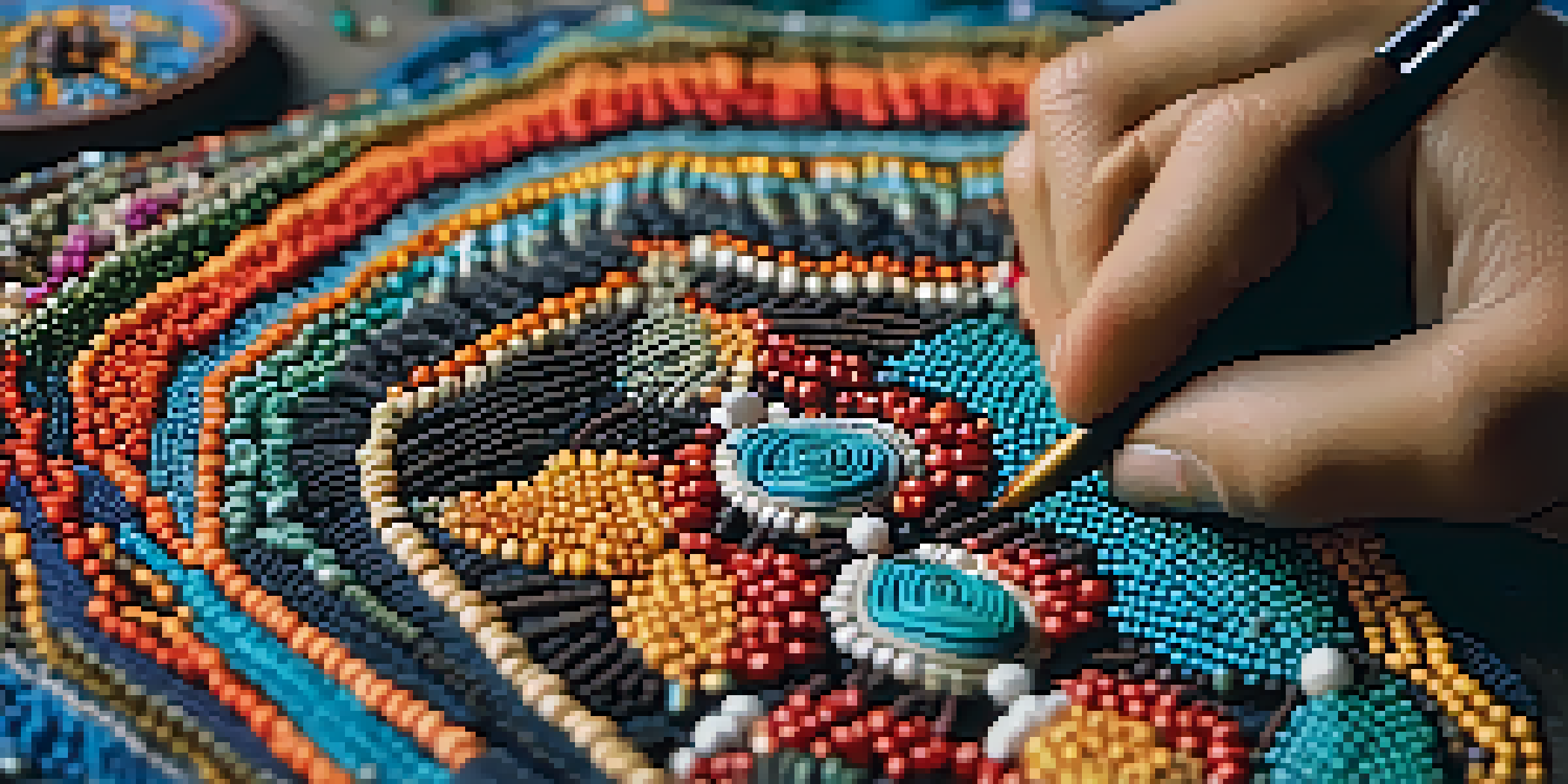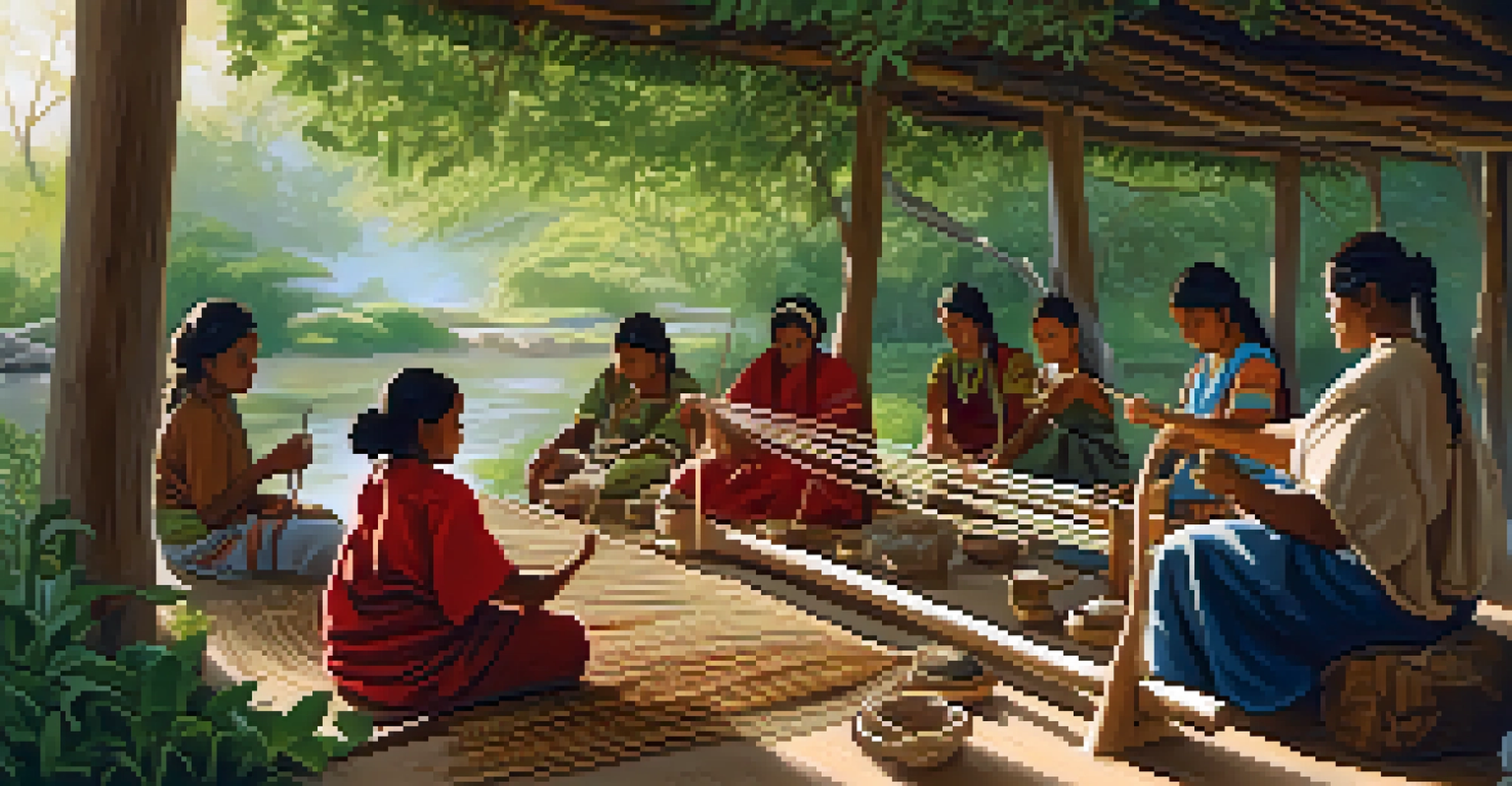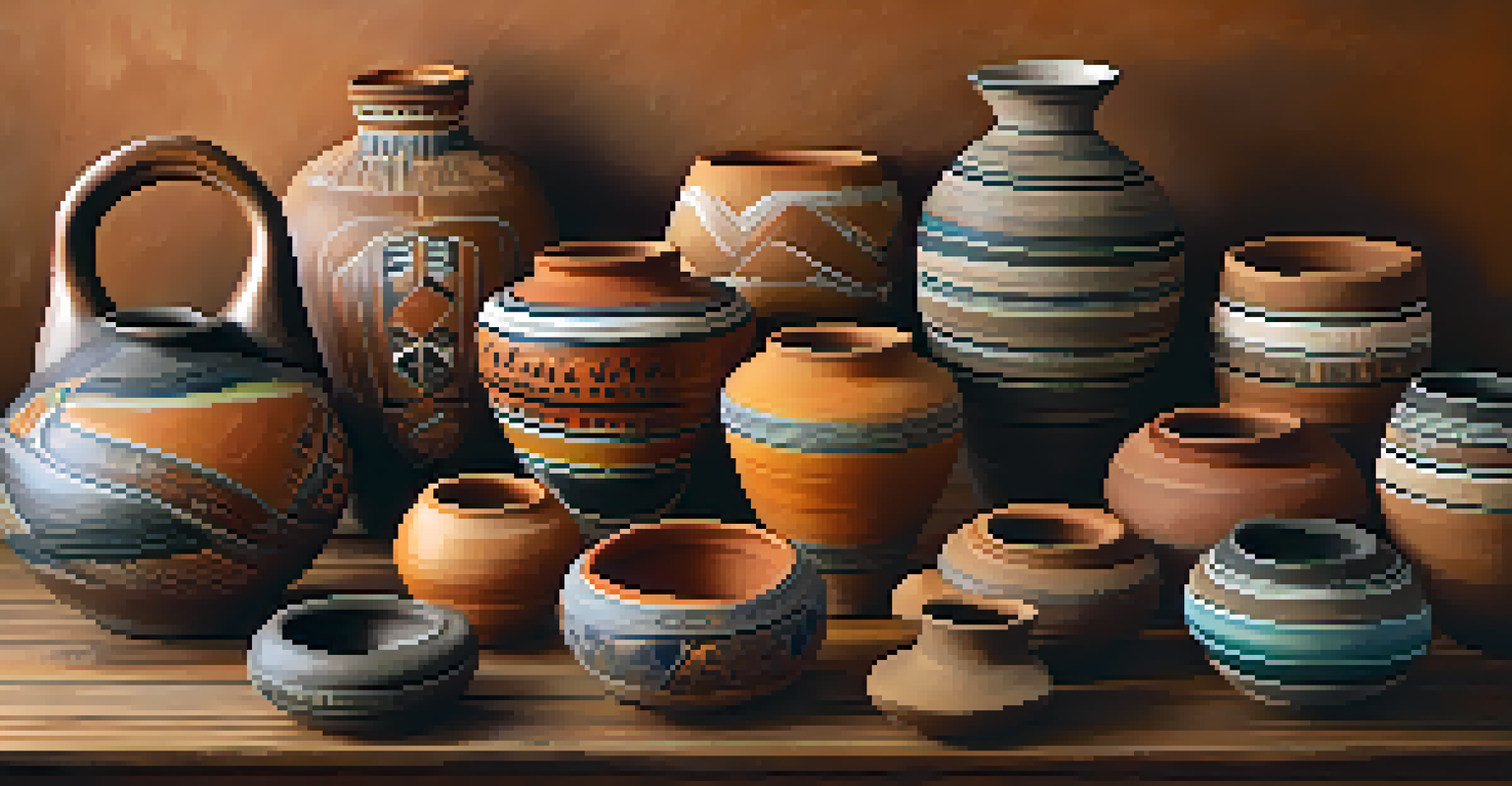Traditional Arts and Crafts of Oregon's Indigenous Peoples

Introduction to Oregon's Indigenous Arts and Crafts
Oregon's Indigenous peoples have a long history of artistry that reflects their connection to the land and their cultural heritage. These traditional arts and crafts are not just beautiful; they serve as a means of storytelling, spiritual expression, and community identity. From intricate beadwork to vibrant woven baskets, each piece embodies the skills and traditions passed down through generations.
Art is the most beautiful of all lies; it is the most truthful of all truths.
The diverse tribes of Oregon, including the Confederated Tribes of Warm Springs and the Coquille Tribe, each contribute unique styles and techniques. Their arts often showcase natural materials sourced from the local environment, such as cedar bark, animal hides, and various plants. This reliance on nature highlights the Indigenous philosophy of living in harmony with the earth.
Understanding these artistic practices provides insight into the cultural significance behind them. Each craft carries meanings that go beyond aesthetics, reflecting the values, beliefs, and histories of the Indigenous peoples of Oregon.
The Significance of Weaving in Indigenous Cultures
Weaving is a vital craft among Oregon's Indigenous peoples, showcasing not only technical skill but also cultural narratives. Traditional weavers use materials like cedar bark, grasses, and wool to create everything from bags to ceremonial regalia. These woven items often serve practical purposes while also holding deep cultural significance.

For many tribes, weaving is a communal activity, fostering connections among community members and passing down knowledge. Through storytelling during the weaving process, younger generations learn about their heritage, values, and the importance of their environment. This shared experience strengthens community bonds and preserves traditions.
Indigenous Arts Reflect Culture
Oregon's Indigenous arts and crafts serve as vital expressions of cultural heritage, storytelling, and community identity.
Moreover, the designs and patterns used in weaving are often symbolic, representing tribal identity and history. Each piece tells a story, embodying the spirit and resilience of Indigenous peoples in Oregon, making the craft an essential part of their cultural fabric.
The Role of Beadwork in Cultural Expression
Beadwork is another beautiful and intricate art form found in Oregon's Indigenous cultures, often used to create jewelry, clothing, and ceremonial items. The process of beadwork is meticulous, involving the careful selection and arrangement of beads to create patterns that hold personal and cultural significance. These creations may serve as markers of identity, status, or spiritual connection.
Indigenous art is not only a reflection of the past, but also a bridge to the future.
For many Indigenous artists, beadwork is a way to connect with their ancestors and express their cultural pride. The colors and patterns chosen can symbolize various elements of nature, tribal identity, or personal stories. This form of artistic expression not only showcases creativity but also serves as a means of preserving cultural narratives.
Additionally, beadwork plays a significant role in ceremonies and rituals. Whether adorning a dancer's costume or used in a gifting ceremony, these pieces enhance the spiritual significance of the events, making them even more meaningful for the community.
The Art of Carving: Wood and Stone
Carving is a time-honored tradition among Oregon's Indigenous peoples, utilizing materials like wood, stone, and bone to create functional and decorative items. Carved pieces can range from totem poles and canoes to intricate tools and ceremonial masks, each telling a story or representing a cultural belief. This craft requires not only skill but also a deep understanding of the materials used.
The symbolism in carving is profound, with many pieces serving as representations of clan lineage, spiritual beliefs, or natural elements. Carvings may also depict animals, which hold significant roles in Indigenous culture, embodying traits that the community values. This connection to nature reinforces the importance of respecting and understanding the world around them.
Weaving and Beadwork Unite Communities
Weaving and beadwork are not only artistic forms but also communal activities that strengthen cultural ties and preserve traditions.
Through carving, artisans can preserve their history and share their stories with future generations. Each carved item serves as a tangible link to the past, ensuring that traditions are not lost but celebrated and passed on.
Pottery: A Blend of Functionality and Artistry
Pottery is an essential craft among many Indigenous communities in Oregon, serving both functional and artistic purposes. The process of creating pottery involves gathering clay, shaping it by hand, and often decorating it with traditional designs. These vessels are used for cooking, storage, and ceremonial purposes, showcasing the practicality of this art form.
The designs on pottery often reflect cultural symbols and stories, with each piece representing the unique identity of the tribe that created it. This artistic expression allows for a connection to the past while also providing a canvas for modern interpretations. Many contemporary Indigenous potters blend traditional techniques with modern aesthetics, creating vibrant pieces that resonate with both history and current trends.
Pottery also serves as a way to connect with the earth, as artisans often incorporate local materials and techniques. This relationship with the environment emphasizes the importance of sustainability and stewardship, which are core values among Indigenous peoples.
Modern Influences on Traditional Arts and Crafts
While traditional arts and crafts remain vital to Oregon's Indigenous peoples, modern influences have begun to shape their expression. Many contemporary artists are blending traditional methods with modern materials and styles, creating innovative works that resonate with both Indigenous identity and contemporary art movements. This fusion keeps the traditions alive while appealing to broader audiences.
Social media and online platforms provide Indigenous artists with a global stage, allowing them to share their work and stories with a wider audience. This exposure not only helps preserve their craft but also fosters appreciation and understanding of their culture. It creates opportunities for dialogue and connection with people outside their communities.
Modern Influences Enrich Traditions
Contemporary artists are blending traditional methods with modern elements, keeping Indigenous arts vibrant and relevant in today's world.
Despite these modern influences, many artists strive to honor their heritage and maintain the integrity of their craft. They often emphasize the importance of cultural education, ensuring that future generations continue to learn and practice these traditional arts, thus preserving their rich cultural legacy.
Supporting Indigenous Artists and Their Communities
Supporting Indigenous artists and their crafts is crucial for the sustainability of their cultural practices. By purchasing handmade items, attending exhibitions, and participating in workshops, individuals can contribute to the economic well-being of Indigenous communities. This support not only helps artists thrive but also ensures that their traditions continue to be practiced and celebrated.
Moreover, fostering awareness about the significance of these crafts can lead to greater appreciation and respect for Indigenous cultures. Community events, art fairs, and cultural festivals provide platforms for artists to showcase their work, share their stories, and educate the public about their heritage. These interactions can build bridges between communities and promote understanding.

It's essential to approach support with respect and acknowledgment of the cultural significance behind these crafts. Engaging with Indigenous artists and communities in meaningful ways creates lasting relationships that honor their heritage and contribute positively to their futures.